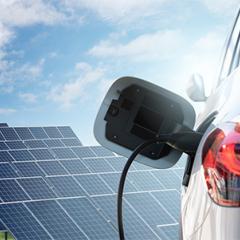Doomsaying about new technology helps make it better

Brendan Markey-Towler, The University of Queensland
That new technologies could actually be bad for us, by sapping our attention or ruining our memories, is an argument that goes back to Socrates. It’s tempting to summarily dismiss these concerns, but such tech-doomsaying is actually an important part of economic discovery.
Our societies are organised by rules, embedded in our collective knowledge, about the proper way to behave and interact with each other. These rules are worked out over a long, often bitter process of debate and competition between rival ideas about society.
Some of the most important rules we need to discover are about how to use technology and, just as importantly, how not to use it.
Read more: Is social media turning people into narcissists?
One recent example of tech-doomsaying is a viral video featuring Denzel Washington, Simon Sinek, Joe Rogan and others discussing social media and smartphones. We spend no time with real people any more, the video goes, as we desperately seek the next “like” and “comment”.
This video joins a long and proud history stretching back through Neil Postman (who wrote the brilliant Amusing Ourselves to Death), Alvin and Heidi Toffler (of Future Shock fame) to John Kenneth Galbraith in The Affluent Society.
It also joins a veritable cacophony warning about the perils of everything from artificial intelligence to blockchains and cryptocurrencies.
Institutional economics helps us understand, counter-intuitively, why this doomsaying actually helps make new technologies better.
Working out the rules
The great institutional economist Clarence Ayres wrote about how technology becomes incorporated into our lives in a way that is roughly equivalent to the way tribal societies use totems to interact with each other.
In tribal societies, a whole system of rules is developed and kept by the “shamans” about what totems mean and how they are to be used in everyday life.
Similarly, a whole system of rules needs to be developed by tech gurus experimenting with new technologies and teaching people about how, when and why to use them in everyday life.
Read more: Putting a price on friendship: why social media sites leave the Luddites behind
New technologies don’t simply get incorporated immediately into everyday life, as traditional economic models assume. They don’t come with an instruction manual outlining what they can be used for, nor a set of regulations about how they are to be used.
We have to learn and develop rules ourselves about how, when and why to use new technologies. This requires that we talk to each other and share our experiences and thoughts.
As we talk to each other and share ideas about new technology, a competition between ideas develops. From this we discover, as a society, new knowledge about how, when and why we should use new technologies in our everyday lives.
Hype and doomsaying help us discover
My colleague Jason Potts has written about one side of this process, whereby “hype” about a new technology helps us to discover what it can and should be used for.
But there is another, easily forgotten side of this process whereby doomsaying about a new technology moderates our enthusiasm and promotes caution. We need to discover what a new technology cannot do and what it should not be used for.
Every inventor is both a Prometheus stealing fire from the gods, and a Pandora unwittingly releasing a swarm of potential evils on the world. The competition of ideas between hype and doomsaying allows us to discover helpful rules which deal with both.
Nuclear technology provides an excellent example of this. Many arguments have been made about its astonishing potential as an efficient energy source, as a mining technology and as a source of propulsion, among other things. But we all know about its dangers too – Chernobyl, Fukushima, Three Mile Island, and the areas of the Earth that will be radioactive for tens of thousands of years as a result of nuclear fallout.
Over time, despite often bitter disputes, we have discovered a substantial body of knowledge about how, when and why we should nuclear technology.
Read more: Fukushima seven years later: case closed?
The debate about social media and smartphones is much the same. There are a range of arguments about the spectacular potential for this technology to give ordinary people a technology to communicate on a scale previously reserved for only the very powerful and very rich.
But there are also counterarguments about its addictiveness, its effect on our attention span, and its enabling of the very powerful and very rich to manipulate us.
Over time, despite what will often be a fierce dispute between these competing ideas, we can expect to discover a substantial body of knowledge about how best to use social media.
![]() So, institutional economics shows us that tech-doomsayers help make technology better. Technology doesn’t come with a ready-made rulebook for how to use it. We have to discover this in a process of trial, error and argument. And for this the doomsayer is just as vital as the visionary.
So, institutional economics shows us that tech-doomsayers help make technology better. Technology doesn’t come with a ready-made rulebook for how to use it. We have to discover this in a process of trial, error and argument. And for this the doomsayer is just as vital as the visionary.
Brendan Markey-Towler, Industry Research Fellow, The University of Queensland
This article was originally published on The Conversation. Read the original article.



